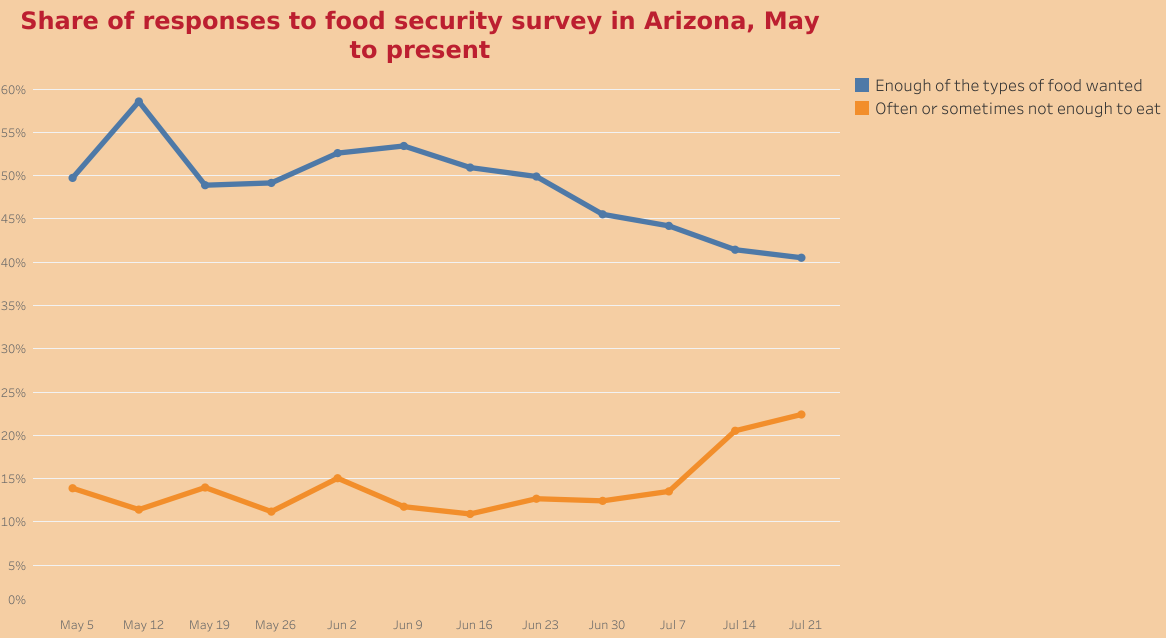
SNAP is the anti-hunger tool Arizona needs now
As the per-capita rate of COVID-19 in Arizona remains one of the highest in the US, the public health and economic emergency continues to disrupt workplaces. Many workers continue to experience reduced hours, furlough, or joblessness, resulting in significant losses to income. This has put a strain on household budgets for basic needs, like rent, transportation, utilities, and adequate food. With increased activity at food banks, hunger, particularly for children, remains a major problem for Arizona. As Congress convenes to take up another round of relief legislation, nutrition assistance programs will be key to addressing food insecurity and affordability for many Arizonans.
According to the Household Pulse Survey conducted each week by the U.S. Census Bureau, a significant share of Arizona households with children often or sometimes do not have enough food to eat, rising from 11% to 21% from mid-June to mid-July. At the same time, the share of Arizona households with children that report “enough of the types of food we wanted” fell from 52% in early June to 41% in mid-July. These estimates represent an alarmingly high number of children with inadequate nutritious food.

Some of these trends can be traced to rising food prices from pandemic-related supply disruptions. According to recent research, prices for all groceries rose approximately 5% compared to the previous year, with meat, poultry, fish, eggs, and dairy with the steepest rise. This increase adds up for families struggling to make ends meet during the pandemic. Households need programs to support and sustain their access to adequate and nutritious food.
Fortunately, the Supplemental Nutrition Assistance Program (SNAP, formerly known as food stamps) does just that. While policymakers took steps to grant flexibilities to maximize benefits and offer a new Pandemic EBT program to replace the value of school lunches for all participants, more struggling families are enrolling. According to the Arizona Department of Economic Security (DES), the number of participating families rose sharply since March, with over 430,000 families now enrolled.
However, the flexibilities to SNAP did not raise benefits for the lowest-income participants, which constitute 40% of SNAP households. Congress should raise the SNAP benefit by 15% to make sure these families can afford the food they need. Fortunately, many members of Arizona’s Congressional delegation affirmatively voted to increase SNAP benefits as a part of the Health and Economic Recovery Omnibus Emergency Solutions (HEROES) Act. Yet, neither of Arizona’s Senators have announced support for this in the current negotiations. It is time to let our leaders know that SNAP makes sense for Arizona. Let them know by contacting their offices and use the hashtags #BoostSNAPNow when advocating online.



